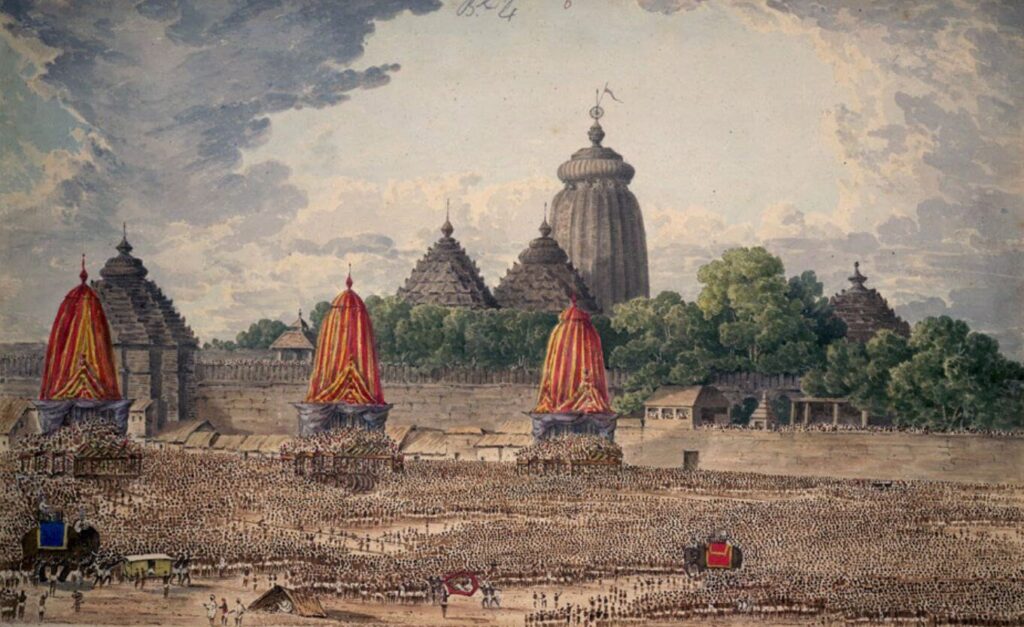
When the British first came to India in the 1600s, they viewed the Indians as pagans or heathens and ridiculed their religious practices and the teachings of the Vedas. They described the Deities in the temples as being “idols” – false gods made of wood, stone and metal – and likened their worship to the heathen idol worship condemned in the Old Testament. Not understanding that “idol” was an insulting and derogatory term, many Hindus today still refer to the arca-murtis or Deities in their temples as idols. So, what is the difference between an idol and a Deity?
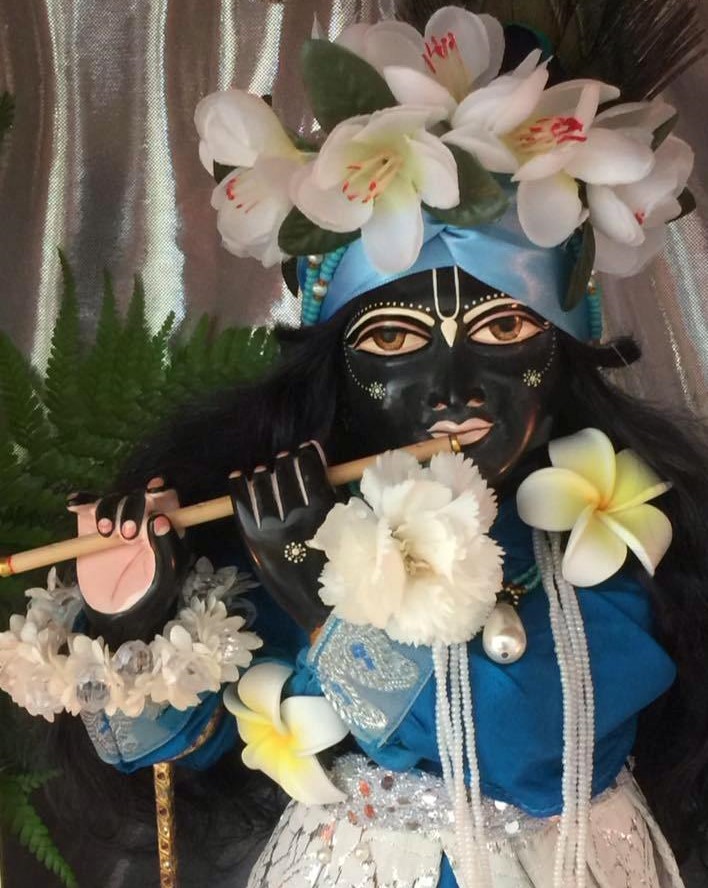
In Old Testament times, the Jewish people had no clear understanding of what God was like, and therefore they were forbidden from worshiping a speculative form of the Lord. Various pagan peoples worshiped concocted images of various creatures as gods. For instance the Old Testament describes that while Moses was up on Mount Sinai receiving the Ten Commandments, the Jewish people who had accompanied him out of Egypt were influenced by the pagan people in whose land they were staying, and melted down their golden ornaments to make a golden calf or bull which they started worshiping.
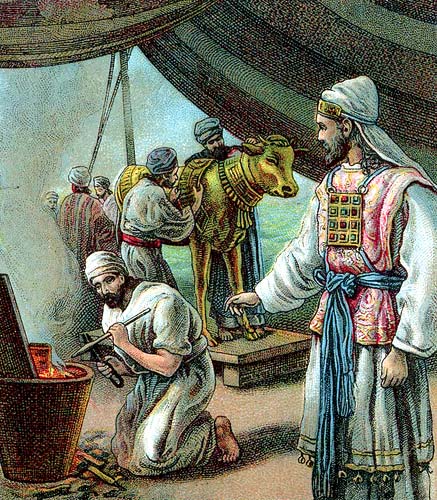
Moses chastised his people and according to the writers of the Old Testament, the Jews were given the following instructions from God:
Do not turn to idols or make gods of cast metal for yourselves. I am the Lord your God. Do not make idols or set up an image or a sacred stone for yourselves, and do not place a carved stone in your land to bow down before it. I am the Lord your God.
[Leviticus 19:4, 26:1]
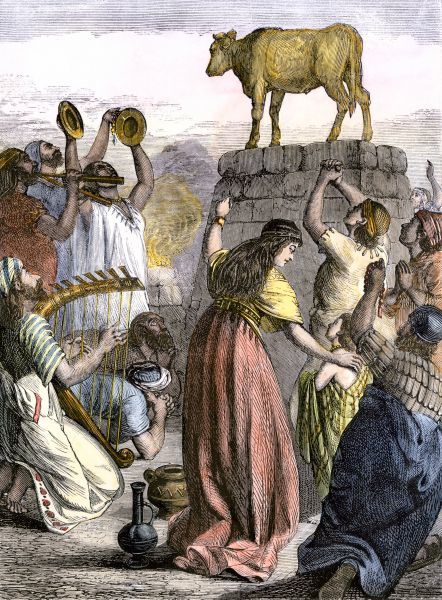
Remembering and Imagining
Krishna explains in Bhagavad-gita:
I am seated in everyone’s heart, and from Me come remembrance, knowledge and forgetfulness. …
[Bhagavad-gita 15:15]
We receive information about Krishna’s Deity form and how to worship the Deity from the Vedic scriptures and from the enlightened spiritual masters representing the Lord in disciplic succession. When we remember what we have seen or heard from these transcendental sources and stored within our mind, this is not the same as imagination. Spiritual remembrance is the recollection of an image or information or sound vibration which has descended from the transcendental strata via the disciplic succession of saints.
Imagination occurs when we take images and ideas stored in our mind from our mundane experience within the material world, and then use our materially conditioned mind to try and invent some meaning by combining these material images and ideas in various ways. This is then called “mental speculation.” If a religious tradition does not have actual information about the form of God – what He actually looks like – then it will be impossible for there to be Deity worship within that tradition, as any form of “God” they concoct will be speculative and not transcendental.
An article from the Sydney Morning Herald in 1994, titled “God the Father, God the Person,” demonstrates how many people have no clear idea of God’s form or appearance, and often leave it up to the individual to speculate and form their own idea of what the Supreme Lord is like:
The Anglican Church’s national Women’s Commission has called for fewer references to God as “He” in the common prayer book. And it has been suggested that Anglicans in future should occasionally pray to the Creator, Redeemer and Spirit of Grace instead of the Father, Son and Holy Spirit. In a formal submission to the Church’s General Synod Liturgical Commission, which is in the final stages of overhauling the prayer book due to come into use next year, the Women’s Commission said:
“Language should always be gender inclusive. In referring to God, every attempt should be made to avoid language, especially pronouns, which may convey that God is a male. Emphasis on male, power, hierarchical imagery and language such as Almighty, Father, King, Lord is pervasive and should be modified,” the Women’s Commission said. “For psalms, instead of using He and His, it is better to use God and God’s, or to address God as You,” the submission said. …
… The national secretary of the Movement for the Ordination of Women, the Reverend Peta Sherlock said: “The problem is you cannot call God an ‘It’ because that is a put-down in English, so if you want to use a pronoun for God you have got to use a ‘He’ or a ‘She’. I still imagine God as a little old man sitting up on a cloud, but I am not unhappy with God as a ‘She.’ I have been known to pray to God as a mother,” she said. …
[Debra Jopson: The Sydney Morning Herald, September 1994]
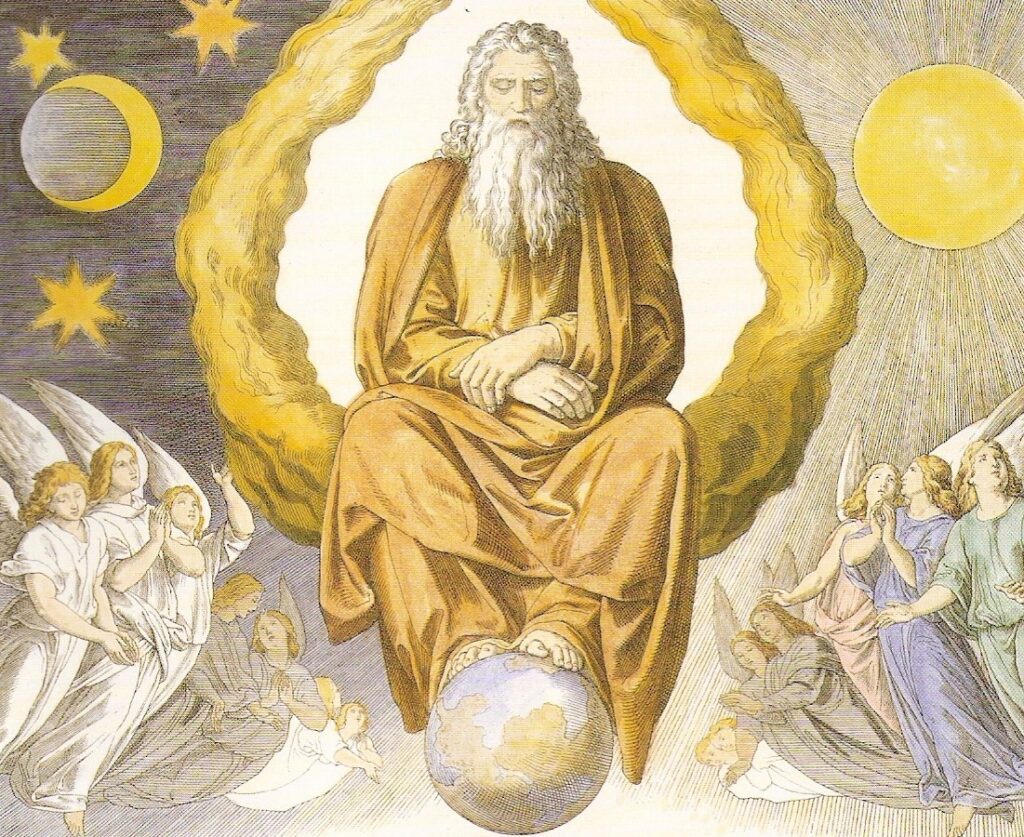
Krishna descends as the Deity form to accept our worship, and the form of the Deity is therefore authorized by God and his loving servants. Srila Bhaktivedanta Swami used the analogy that if you want to post a letter and be certain that it reaches its destination, you have to place it in the post box which is authorized by the postmaster general, or by the government. You can’t just place your letter in any old tin can you find by the side of the road and expect that it will reach its destination. Similarly, the Deity form is authorized by God through scripture and parampara, whereas an idol is an image concocted from the imagination of some conditioned soul who has no knowledge of God’s actual form and no authority from God or His representative to create the Lord’s transcendental form.
All living entities, moving and non-moving, are My expansions and are separate from Me. I am the Supersoul of all living beings, who exist because I manifest them. I am the form of the transcendental vibrations like omkara and Hare Krishna, Hare Rama, and I am the Supreme Absolute Truth. These two forms of Mine – namely the transcendental sound and the eternally blissful spiritual form of the Deity, are My eternal forms; they are not material.
[Srimad Bhagavatam 6:16:51]
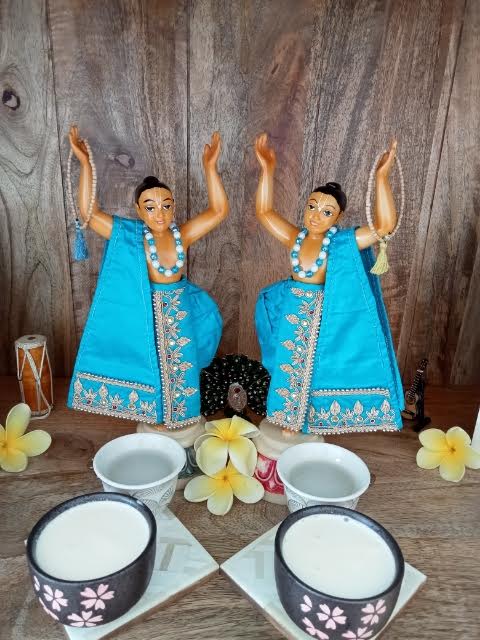
One who thinks the Deity in the temple to be made of wood or stone, who thinks of the spiritual master in the disciplic succession as an ordinary man, who thinks the Vaisnava in the *Acyuta-gotra [infallible family] to belong to a certain caste or creed or who thinks of caranamrta or Ganges water as ordinary water is taken to be a resident of hell.
[Padma Purana: quoted Srimad Bhagavatam 4:21:12 purport]
[*Different “gotras” or family designations, are distinctions in terms of the material body. A Vaisnava belongs to the Acyuta-gotra or “infallible family” of the Supreme Personality of Godhead, and is transcendental to all considerations of caste, creed, colour or nationality.]
People in general do not have a clear idea of what actually constitutes idol worship. Idol worship originates with a speculative or imaginary image of God within the mind. And it can refer to the worship of anything which is not God. In the “Catechism of the Catholic Church” it is stated:
Idolatry not only refers to false pagan worship … Man commits idolatry whenever he honors and reveres a creature in place of God, whether this be gods or demons, power, pleasure, race, ancestors, the state, money etc.
And this is in fact a correct understanding of what is idol worship. Idol worship is the worship of anything which is not God. So if you worship a golden calf, that is idol worship. And so is the worship of your husband or wife, pop stars, movie stars, sports stars, models, reality television stars, politicians, social media influencers and celebrities etc. etc. When I was a teenager, my idol was Bob Dylan. I had a quote from him to suit every occasion. But then I met my spiritual masters, and I realized Bob was a very clever lyricist, but he wasn’t an enlightened spiritual master. People worship so many things instead of worshiping God. Some people worship power, money, their home or their country. And today, we see so many people worshiping their selfies – their own image. This is all idol worship.

In the Nectar of Devotion, chapter 9, Srila Bhaktivedanta Swami explains that the arca-murti or Deity form of the Lord is not an idol:
The Lord is transcendental to our mundane senses. He cannot be seen with our present eyes, nor can He be heard with our present ears. To the degree that we have entered into the service of the Lord or to the proportion to which our lives are freed from sins, we can perceive the Lord. But even though we are not free from sins, the Lord is kind enough to allow us the facility of seeing Him in His arca-murtis in the temple. The Lord is all-powerful, and therefore He is able to accept our service by presentation of His arca form. No one, therefore, should foolishly think the arca in the temple to be an idol. Such an arca-murti is not an idol but the Lord Himself, and to the proportion to which one is free from sins, he is able to know the significance of the arca-murti.
In the Naradiya Purana there is a statement about bowing down and offering respect to the Deity. It is said there, “A person who has performed a great ritualistic sacrifice and a person who has simply offered his respectful obeisances by bowing down before the Lord cannot be held as equals.” The person who has executed many great sacrifices will attain the result of his pious activities, but when such results are finished, he has to take birth again on the earthly planet; however, the person who has once offered respects, bowing down before the Deity, will not come back to this world, because he will go directly to the abode of Krishna.
[Nectar of Devotion ch.9]
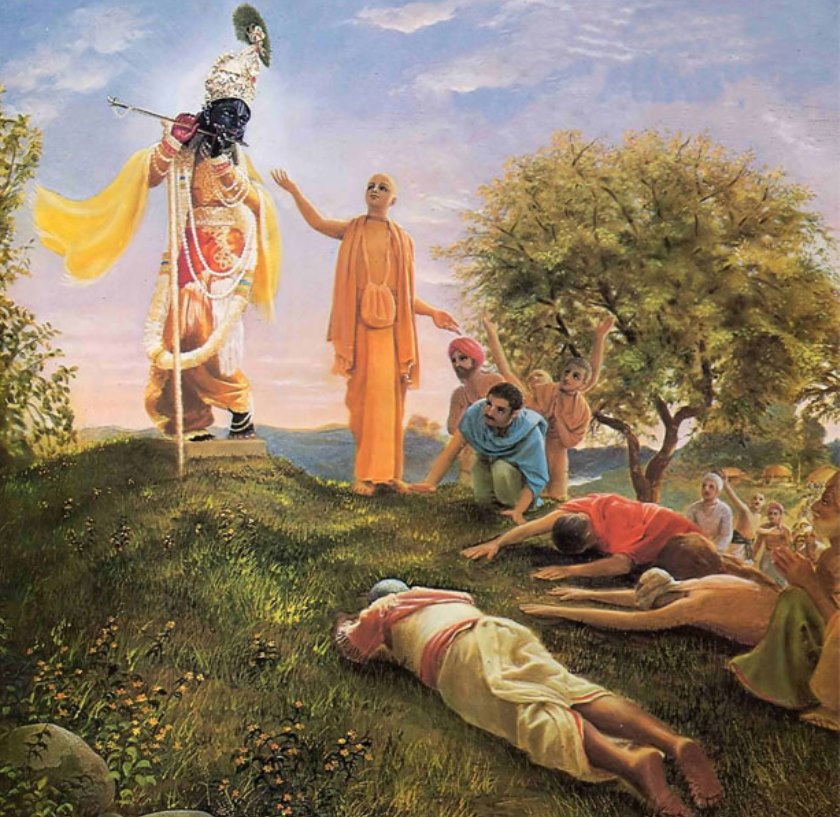
In our present state of imperfect material existence, we cannot see the Supreme Lord due to imperfect vision. Yet those devotees who want to see Him by means of material vision are favoured by the Lord, who appears in a so-called material form to accept His devotee’s service.
[Srila Bhaktivedanta Swami, Sri Isopanisad Mantra 5 purport]
For the first thousand years of Christianity, it was forbidden for Christians to depict the form of God. Then artists started portraying “God the Father” as an old bearded man. And these images have been venerated by various churches. But these images of God are speculative and have no scriptural basis. Because God is the oldest or original person, the “Ancient of Days” as He is described in Daniel in the Old Testament, He is often depicted in Christian art as an old man with white hair and a long flowing beard [e.g. Sistine Chapel]. This is idol worship – worshiping a speculative or imaginary image of God.
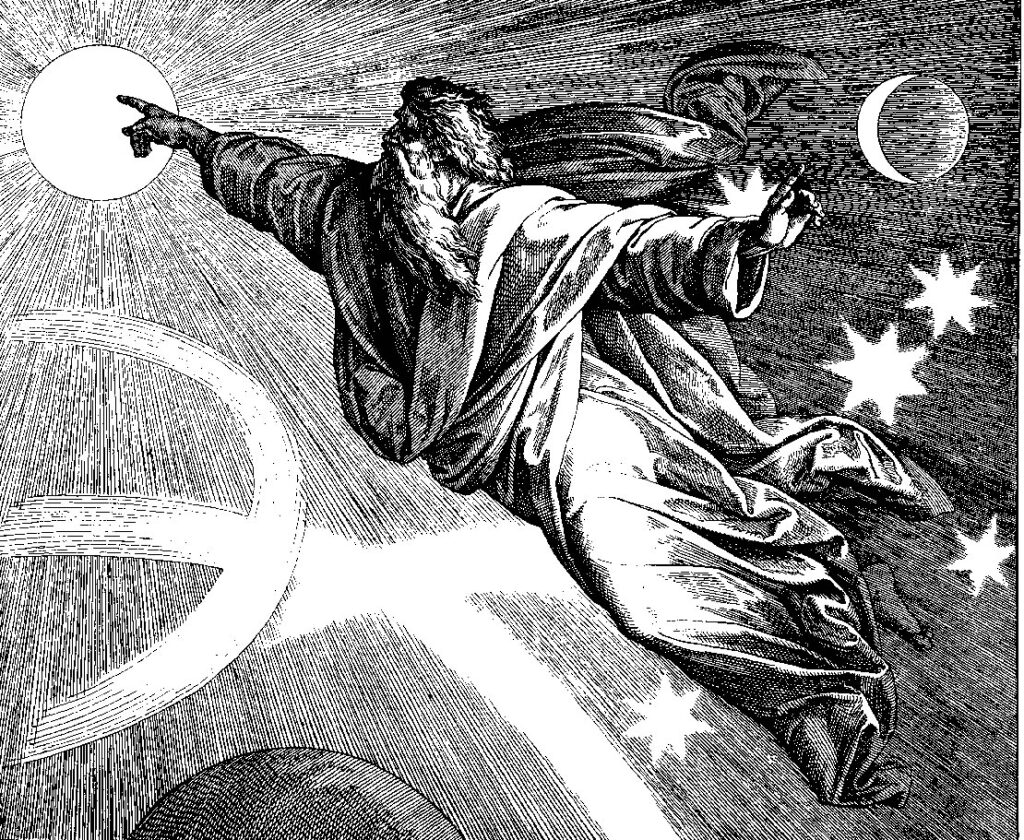
In the Brahma Samhita it is described that although Govinda – Krishna – is the original and oldest person, He always appears as a fresh young youth:
I worship Govinda, the Primeval Lord, Who is the original person – absolute, infallible, without beginning, although expanded into unlimited forms, still the same original, the oldest, and the person always appearing as a fresh youth. Such eternal, blissful, all-knowing forms of the Lord are usually understood by the best Vedic scholars, but they are always manifest to pure unalloyed devotees.
[Brahma Samhita 5:33]
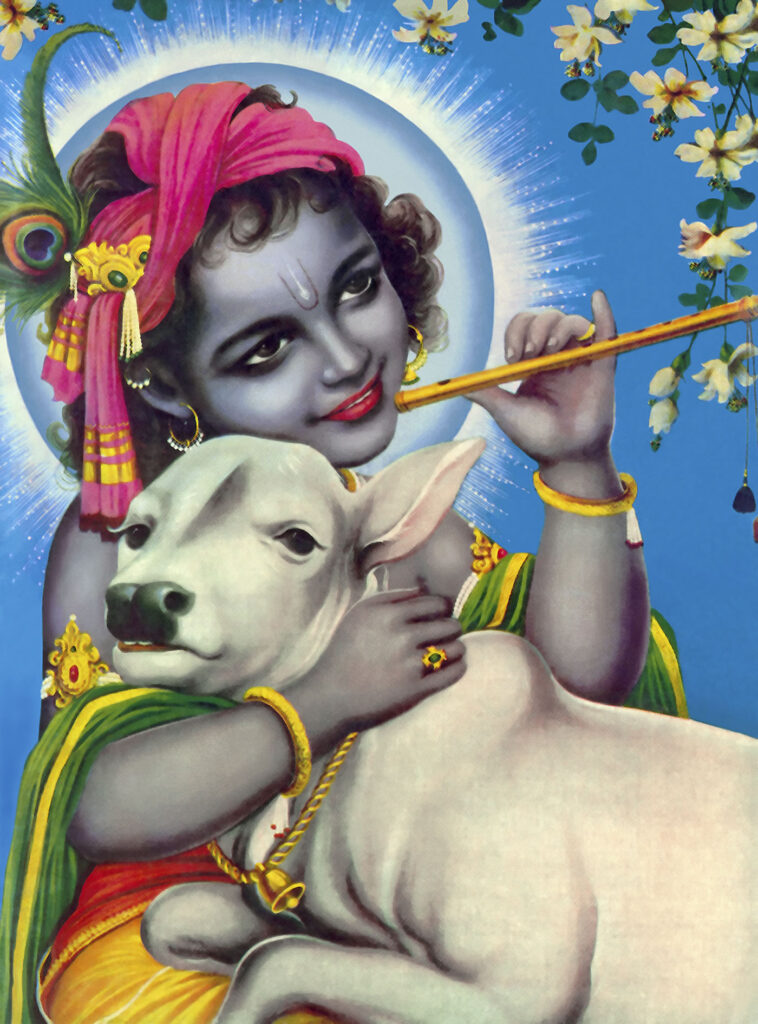
Though most people are unaware of the meaning of The Song of Solomon, Krishna’s beautiful bluish form is described by King Solomon in the Old Testament as “a work of ivory covered with saphires.” This description corresponds perfectly to descriptions in Vedic scripture, and this is how He should be depicted and worshiped.
Let Him kiss me with kisses of His mouth! More delightful is Your love than wine. Bring me, O King, to Your chambers. O My Lover, here He comes across the mountains, across the hills. My lover is radiant and ruddy; He stands out among thousands. His head is golden, His locks are like palm fronds, black as a raven. His eyes are like doves beside running waters. His teeth would seem bathed in milk, and are set like jewels. His lips are red blossoms. His arms are rods of gold adorned with chrysolite. His body is a work of ivory covered with sapphires. His legs are columns of marble. His mouth is all sweetness itself; He is all delight. Such is My Lover, and such is My Friend.
[Old Testament: Song of Solomon].
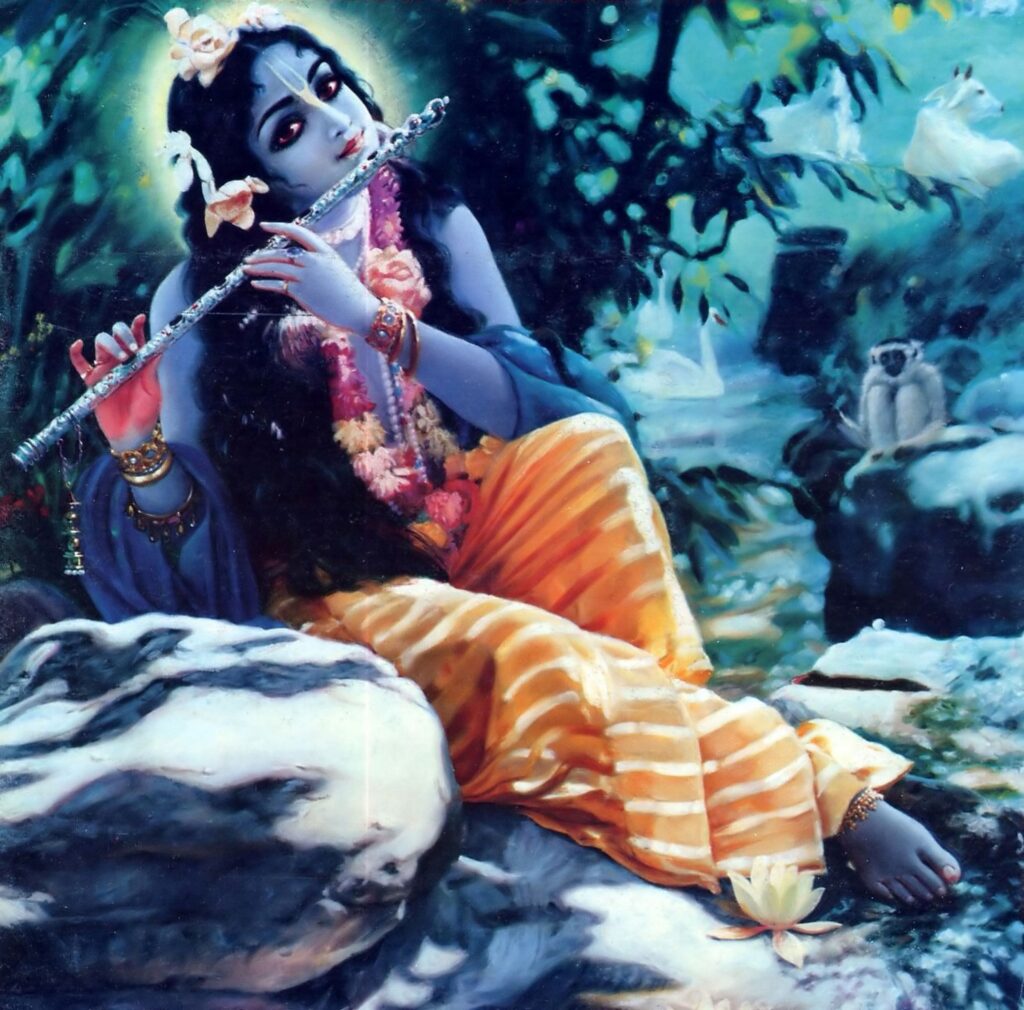
I worship Govinda, the Primeval Lord, Who is adept in playing on His flute, with blooming eyes like lotus petals, with head bedecked with peacock’s feather, with the figure of beauty tinged with the hue of blue clouds, and His unique loveliness charming millions of cupids.
[Brahma Samhita 5:30]
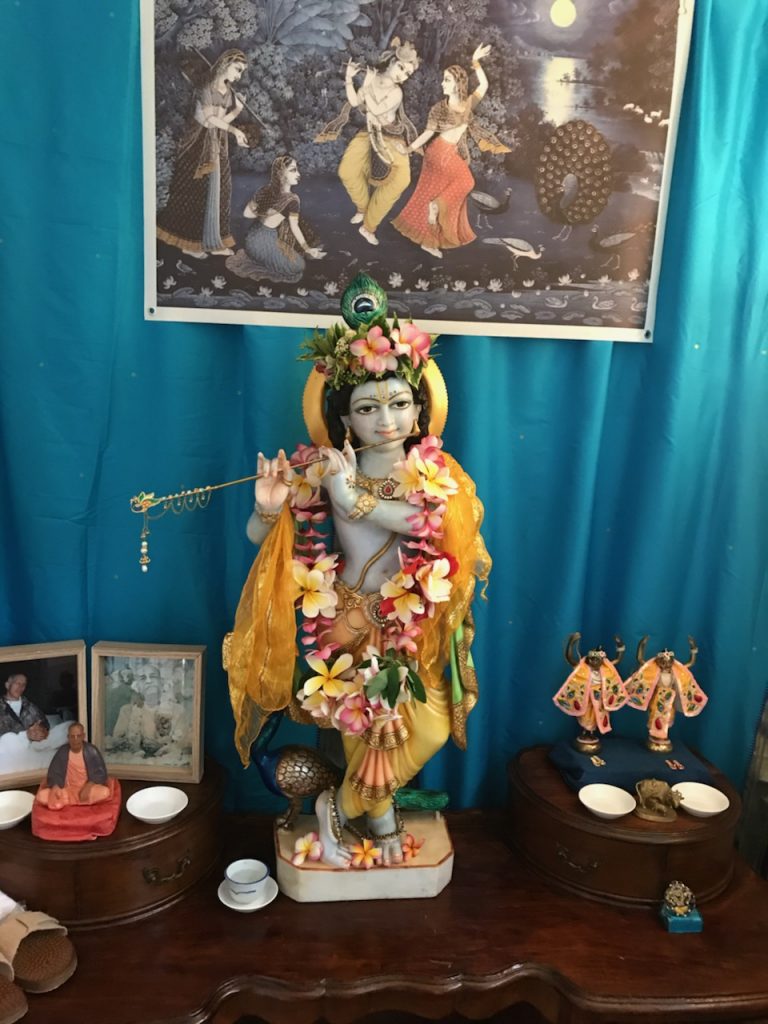
By appearing in the Deity form, Krishna is giving the souls who are dwelling in the material world the opportunity to cultivate their love for Him by gazing upon His all-attractive form and making love offerings of foodstuffs, flowers, incense etc. And the souls are further purified by partaking of the remnants of these offerings, which have been touched by the Lord’s lips.
If one offers Me with love and devotion a leaf, a flower, fruit or water, I will accept it.
[Bhagavad-gita 9:26]
In his purport to this verse, Srila Bhaktivedanta Swami states:
… In the Third Chapter, verse thirteen, Sri Krishna explains that only the remains of sacrifice are purified and fit for consumption by those who are seeking advancement in life and release from the clutches of the material entanglement. Those who do not make an offering of their food, He says in the same verse, are said to be eating only sin. In other words, their every mouthful is simply deepening their involvement in the complexities of material nature. But preparing nice, simple vegetable dishes, offering them before the picture or Deity of Lord Krishna and bowing down and praying for Him to accept such a humble offering, enable one to advance steadily in life, to purify the body, and to create fine brain tissues which will lead to clear thinking. Above all, the offering should be made with an attitude of love. Krishna has no need of food, since He already possesses everything that be, yet He will accept the offering of one who desires to please Him in that way. The important element, in preparation, in serving and in offering, is to act with love for Krishna. …
[Bhagavad-gita 9:26 purport]
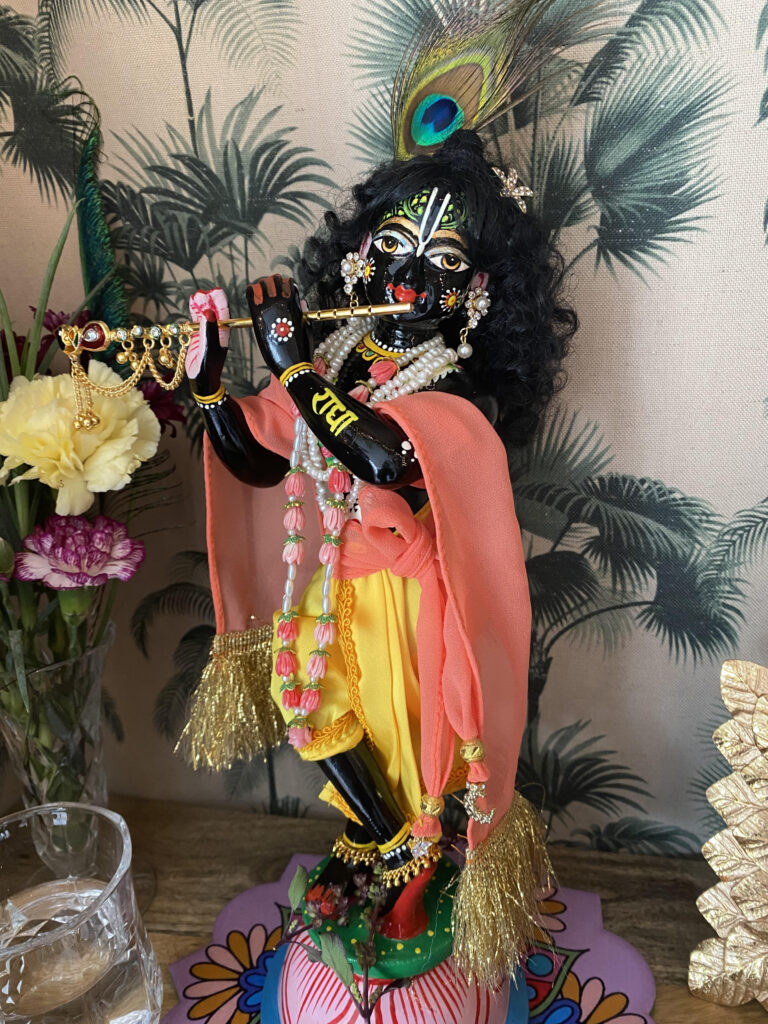


Leave A Reply